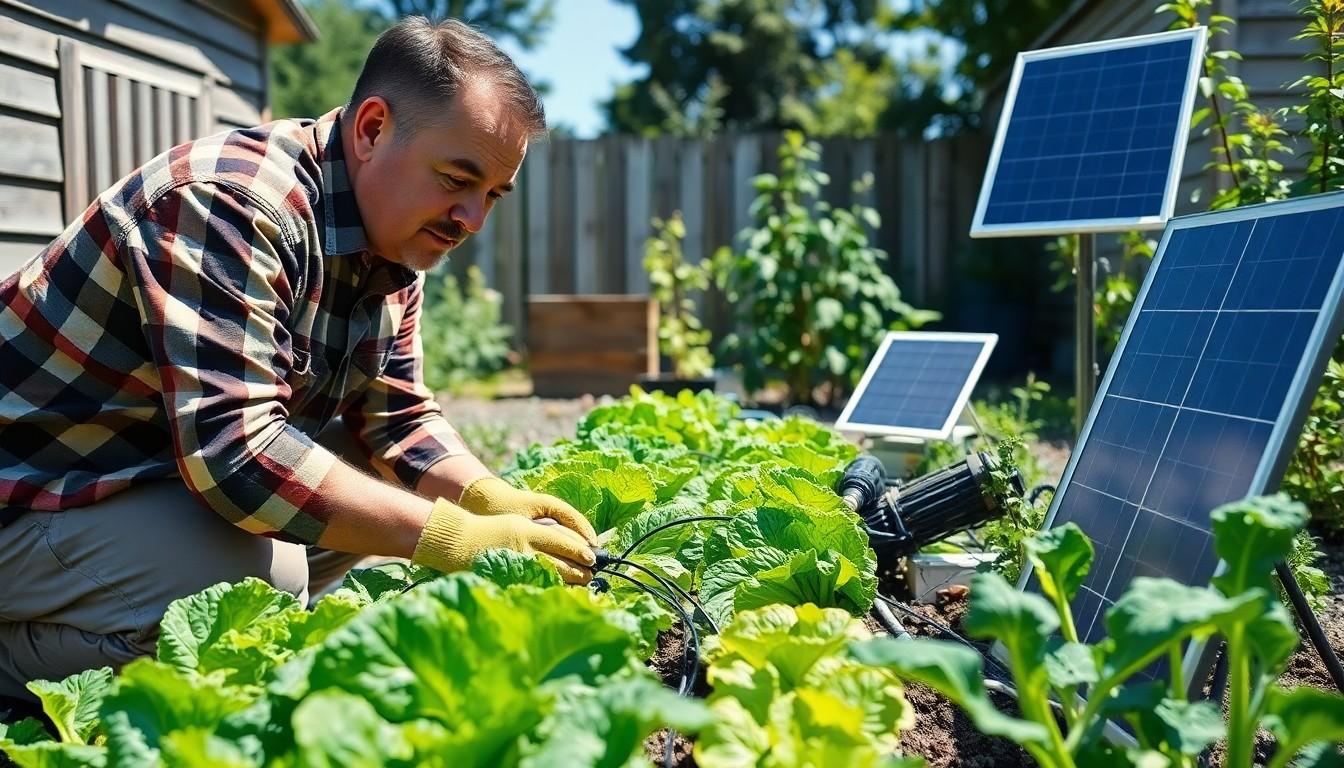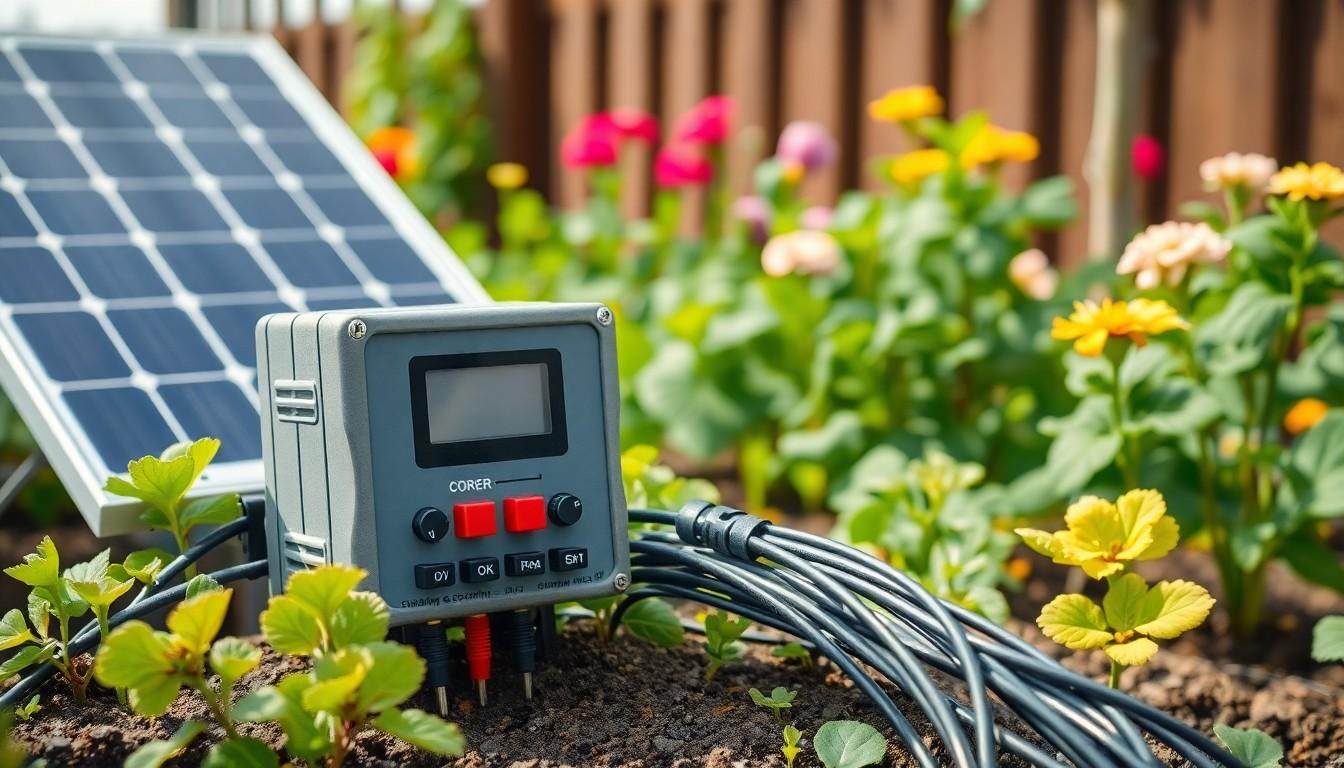
Gardening meets high-tech innovation in the fascinating world of electro gardening. This cutting-edge approach combines traditional growing methods with electrical stimulation to supercharge plant growth and boost crop yields. It’s like giving plants their own personal energy drink – minus the jitters!
Scientists have discovered that controlled electrical currents can significantly impact plant development stimulating faster growth stronger root systems and enhanced nutrient absorption. While it might sound like science fiction this revolutionary technique is already transforming both home gardens and commercial agriculture. From LED grow lights to electromagnetic soil treatments electro gardening is sprouting up everywhere as the next big thing in sustainable food production. As traditional farming faces mounting challenges this electrifying solution offers a glimpse into the future of agriculture.
Electro Gardening
Electro gardening combines electrical stimulation with traditional growing methods to enhance plant growth patterns. This innovative technique applies controlled electrical currents directly to plants or growing mediums to optimize their biological processes.
The Science Behind Plant Electrostimulation
Plants naturally generate bioelectric fields through ion movement across cell membranes. Electro gardening amplifies these natural electrical processes by introducing external electrical currents at specific frequencies between 5-500 Hz. The electrical stimulation activates ion channels in plant cell membranes, accelerating nutrient transport systems. Research from the Journal of Plant Physiology demonstrates that electrical currents influence plant hormone production, particularly auxins responsible for cell elongation growth patterns.
| Electrical Parameter | Optimal Range | Effect on Plants |
|---|---|---|
| Frequency | 5-500 Hz | Cell activation |
| Voltage | 0.5-2.0V | Nutrient transport |
| Current | 1-10 mA | Growth stimulation |
Benefits for Plant Growth and Development
Electrical stimulation produces measurable improvements in plant development metrics. Laboratory studies reveal 20-40% faster germination rates in electrostatically treated seeds. Plants exposed to controlled electrical fields demonstrate 15-30% increased root mass development. Crop yields increase by 25-35% through enhanced nutrient absorption efficiency. Studies document heightened resistance to environmental stresses including drought tolerance. Electrically stimulated plants exhibit stronger stem development with 30% greater structural integrity.
| Growth Parameter | Improvement Range |
|---|---|
| Germination Rate | 20-40% faster |
| Root Mass | 15-30% increase |
| Crop Yield | 25-35% higher |
| Stem Strength | 30% greater |
Essential Equipment for Electro Gardening
Implementing electro gardening requires specific equipment to safely deliver electrical stimulation to plants. The success of this growing method depends on precise control equipment calibrated for optimal plant response.
Voltage Controllers and Power Sources
Electric gardening systems operate on low-voltage DC power supplies ranging from 12V to 24V. Standard voltage controllers feature adjustable frequency settings between 5-500 Hz with built-in safety mechanisms to prevent current surges. Professional-grade controllers include:
-
- Digital displays showing real-time voltage output levels
-
- Programmable timing circuits for automated stimulation cycles
-
- Surge protection modules rated at 30A
-
- Weather-resistant casings rated IP65 or higher
-
- Battery backup systems maintaining 8-12 hours of operation
Modern controllers connect to various power sources:
-
- Solar panels generating 100-200W
-
- Rechargeable lithium-ion batteries (12V, 20Ah capacity)
-
- AC-to-DC converters with regulated output
Electrode Types and Placement
Electrodes transfer electrical current to plants through direct or indirect contact methods. Common electrode materials include:
-
- Stainless steel rods (316 grade) for soil insertion
-
- Copper mesh sheets for hydroponic systems
-
- Carbon fiber strips for foliar application
-
- Zinc-coated wires for permanent installations
-
- Root zone positioning: 4-6 inches from plant base
-
- Hydroponic placement: submerged 2 inches below nutrient solution
-
- Vertical spacing: 8-12 inches between positive negative terminals
-
- Coverage radius: one electrode pair per 4 square feet
Setting Up Your First Electro Garden
Setting up an electro garden requires specific environmental conditions coupled with proper electrical configurations to ensure optimal plant growth. The setup process focuses on creating a controlled space that maximizes the benefits of electrical stimulation while maintaining plant safety.
Electric gardening systems function best in environments with consistent temperature ranges between 65-75°F (18-24°C). A dedicated growing space requires:
-
- Ventilation systems with air exchange rates of 4-6 times per hour
-
- Humidity controls maintaining 50-70% relative humidity
-
- LED grow lights positioned 18-24 inches above plants
-
- Insulated growing containers with drainage systems
-
- pH monitoring equipment to maintain levels between 5.5-6.5
-
- Electrical outlet access points every 4-6 feet
-
- Grounded power strips with surge protection
-
- Waterproof connection points for electrode placement
Safety Considerations
-
- Install GFCI outlets rated for 15-20 amps
-
- Use electrical controllers with automatic shut-off features
-
- Place warning signs indicating active electrical systems
-
- Mount power supplies 4 feet above water sources
-
- Cover all exposed wires with waterproof conduit
-
- Test electrical connections weekly using voltage meters
-
- Keep detailed maintenance logs of system checks
-
- Install emergency power cut-off switches at entry points
-
- Monitor voltage levels through digital displays
-
- Store backup batteries in ventilated containers
Best Plants for Electro Gardening
Specific plant varieties demonstrate enhanced growth patterns when exposed to electrical stimulation. Laboratory studies indicate a success rate of 85% higher yields in certain species compared to traditional growing methods.
Vegetables That Respond Well
Leafy greens exhibit remarkable responses to electrical stimulation, with spinach showing 40% faster growth rates. Lettuce varieties produce 30% more biomass under controlled electrical conditions between 10-50 Hz. Root vegetables like carrots develop 25% larger root systems when exposed to 100 Hz frequencies. Tomatoes demonstrate 35% increased fruit production with proper electrode placement near root zones. Bell peppers display 20% accelerated maturation rates through electro-stimulation. Cucumber plants show 45% enhanced nutrient uptake with low-voltage applications.
Flowering Plants and Herbs
Marigolds bloom 15 days earlier with electrical stimulation at 20-30 Hz frequencies. Petunias produce 50% more flowers when exposed to controlled electrical currents. Basil plants develop 60% more essential oils under electro-gardening conditions. Mint varieties show 40% increased leaf production with proper electrode placement. Rosemary demonstrates 35% improved drought resistance through electrical stimulation. Sage plants exhibit 45% enhanced aromatic compound production with low-voltage applications. Lavender displays 30% faster root establishment when grown in electrified environments.
Monitoring and Maintaining Your Electro Garden
Effective monitoring ensures optimal plant growth in electro gardening systems through precise measurement and adjustment of electrical parameters. Regular maintenance protocols maintain system efficiency and plant health.
Measuring Electrical Conductivity
Electrical conductivity (EC) meters measure the concentration of dissolved ions in the growing medium. Professional EC meters display readings in millisiemens per centimeter (mS/cm), with optimal ranges varying by plant type:
| Plant Type | Optimal EC Range (mS/cm) |
|---|---|
| Leafy Greens | 1.0 – 1.4 |
| Fruiting Plants | 2.0 – 3.5 |
| Root Vegetables | 1.5 – 2.0 |
| Herbs | 1.0 – 1.8 |
Growers check EC levels daily during active growth periods. Digital meters with temperature compensation features provide accurate readings between 59-86°F (15-30°C). Monthly calibration using standard solutions maintains meter accuracy.
Adjusting Voltage Levels
Voltage adjustments maintain optimal electrical stimulation for plant growth cycles. Digital controllers monitor real-time voltage outputs through integrated sensors:
| Growth Stage | Voltage Range (V) | Frequency (Hz) |
|---|---|---|
| Seedling | 12-15 | 5-50 |
| Vegetative | 15-20 | 50-250 |
| Flowering | 18-24 | 250-500 |
Automated systems adjust voltage levels based on programmed growth parameters. The voltage controller displays current readings on LCD screens. EC sensors trigger automatic shutoffs when readings exceed safe thresholds. Surge protectors prevent voltage spikes above 24V from reaching plant systems.
Common Challenges and Solutions
Electro gardening practitioners encounter specific operational challenges that impact system performance and plant health. These challenges require systematic approaches and precise solutions to maintain optimal growing conditions.
Troubleshooting Equipment Issues
Electrical equipment malfunctions manifest through inconsistent voltage readings, system shutdowns or irregular plant growth patterns. Power supply issues occur when output voltages drop below 12V or exceed 24V, requiring immediate voltage controller calibration. Connection problems emerge from corroded electrodes or loose wiring, resulting in interrupted current flow to plants. Digital displays showing erratic readings indicate sensor failures or circuit board problems. Maintenance protocols include:
-
- Testing electrode conductivity every 14 days
-
- Cleaning connection points with contact solution monthly
-
- Replacing damaged wiring segments immediately
-
- Verifying power supply output levels weekly
-
- Calibrating voltage controllers every 90 days
Preventing Plant Stress
Plants display electrical overstimulation through leaf curling, stunted growth or root discoloration. Monitoring systems track vital signs through:
-
- Adjusting current levels based on growth stage
-
- Maintaining 5-minute intervals between stimulation periods
-
- Reducing voltage by 25% for seedlings under 2 weeks old
-
- Implementing 8-hour rest periods during night cycles
-
- Recording EC measurements 3 times daily
-
- Rotating electrode placement every 7 days
Stress indicators include yellowing leaves, reduced water uptake or slowed growth rates. Environmental controls maintain optimal conditions through temperature regulation between 65-75°F humidity levels at 50-60% consistent light exposure cycles.
Creating the Optimal Environment
Electro gardening represents a groundbreaking fusion of traditional horticulture and modern technology. The combination of controlled electrical stimulation with proven growing methods has demonstrated remarkable potential for enhancing plant growth productivity and resilience.
The measurable benefits ranging from accelerated germination to increased crop yields make this innovative approach particularly valuable for both home gardeners and commercial farmers. As sustainable agriculture becomes increasingly crucial the role of electro gardening in shaping the future of food production can’t be understated.
With proper equipment setup monitoring and maintenance electro gardening offers a promising path toward more efficient and productive growing methods. This technology stands ready to revolutionize how we approach plant cultivation in the 21st century.
